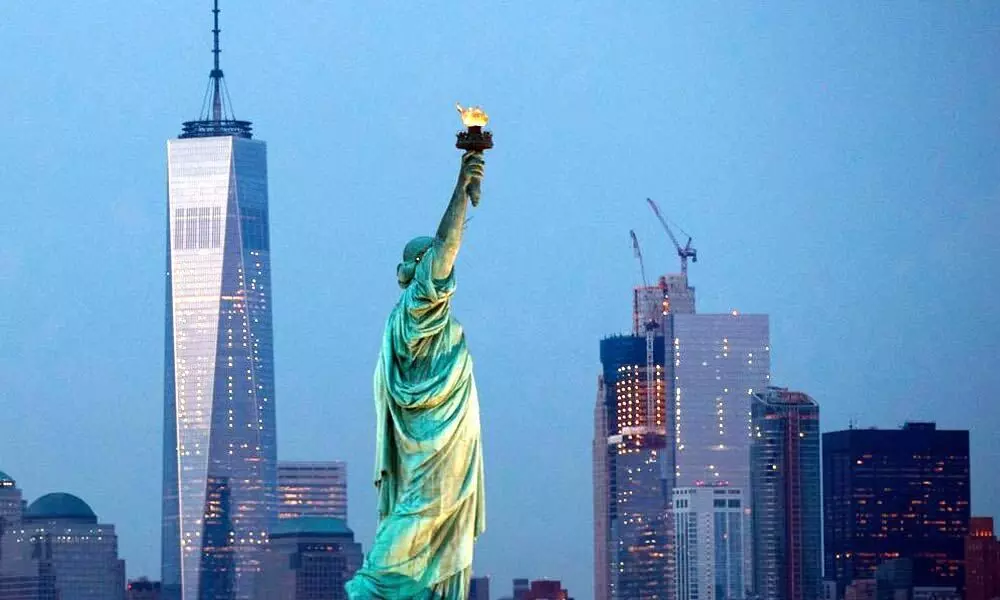Covid pandemic could make US tech hubs richer
The trends that have long favored the tech-focused knowledge economy will continue to prevail after the pandemic. That would almost certainly add to the widening economic inequality we’ve seen since the 1980s
image for illustrative purpose

Americans are rapidly ramping up their protection against Covid-19. The 7-day average of daily vaccinations in the US reached more than 3 million at the beginning of this month - about 1 per cent of the nation's population each day. Despite the recent upticks in cases and positivity rates, we are now in a position where we can begin to envision a near-future not centered on the pandemic. What might that mean for US cities and metropolitan economies?
On the one hand, going by the example of the 1918 flu pandemic, we might expect those cities that imposed aggressive lockdowns to recover fastest. A study by researchers at MIT found that more stringent restrictions early on - shutting down taverns, restaurants and other public spaces for extended periods - appears to have led to a higher rebound in manufacturing employment in the short-term.
On the other hand, today's metro economies are quite different than a century ago. Some new studies suggest a more nuanced dynamic may come into play this time. Working with the McKinsey Global Institute, researchers from the Brookings Institution recently projected that demand for healthcare professionals and STEM workers in American cities will increase post-pandemic. But they warn that demand for workers in service-industry jobs - office support, customer service, food service, food processing and so forth - will decline.
If they're right, we could witness some dramatic economic restructuring over the next decade. Cities such as New York, Boston and San Francisco that have strong foundations in technology, healthcare and education should return to health quickly. But metro areas such as Las Vegas or Orlando - where growth in recent years has been driven more by tourism and hospitality - may struggle to keep pace.
Interestingly, in conjunction with its post-Covid preview, Brookings also released a "policy manifesto" for paying, protecting and empowering the nation's essential workers. The report notes that the pandemic exposed our heavy reliance on healthcare workers, grocery clerks, delivery personnel and millions of other low-paid employees. The authors found that nationally, more than 22 million workers in such jobs - nearly half of all low-wage workers - earned a median wage under $15 per hour.
Clearly, Americans deeply undervalue many of the jobs and industries that are critical for our economy to function. The Brookings researchers recommend a seven-point strategy designed to strengthen the economic power of this essential class, including expanding the Earned Income Tax Credit and Child Tax Credit, enforcing worker-safety standards and whistleblower protections, and strengthening labor laws to encourage worker representation and collective bargaining.
Whether or not we act on such recommendations may well define our nation's economy for a generation. Which cities recover and how well depends on how we choose to treat those Americans struggling to enter the middle class.
If we stay on the same policy path, the trends that have long favored the tech-focused knowledge economy will continue to prevail after the pandemic. That would almost certainly add to the widening economic inequality we've seen since the 1980s, with advances in automation - some pioneered under the pressure of Covid-19 lockdowns - eliminating even more service-sector jobs.
Many Sun Belt metros, which have created middle-class jobs in the energy, hospitality and food-service industries over the last 40 years, may then confront some of the same challenges that have ravaged the Rust Belt. Rather than a coast-heartland divide - with significant wealth generation in coastal metros and middle-class stabilization (at best) in the Sun Belt and economic decline in the Rust Belt - we may see more Sun Belt metros begin to fall behind.
The point isn't to save all those service-sector jobs threatened by automation, which would be unlikely. It's to raise workers already performing essential tasks into the middle class, by paying them wages commensurate to their value to the economy.
The middle class we wish to have in America - and the one we need to maintain the vibrancy of US cities - is already here. It's just not recognized as such by the nation's business leaders and policymakers. Workers in hospitality, customer service and food service, healthcare, and other vital industries require much more than our gratitude. They need bold policy actions to raise incomes and increase job security.
While it doesn't include a minimum-wage hike, the Biden administration's $1.9 trillion American Rescue Plan pushes post-pandemic middle-class security in the right direction. Perhaps its most notable proposal is the expansion of the Child Tax Credit. With families earning as much as $150,000 annually receiving the full credit, nearly every American family that identifies as middle-class will benefit.
It's a bold gambit to stimulate the US economy. It should also be a blueprint for how we establish social priorities for our post-pandemic future. (Bloomberg)

